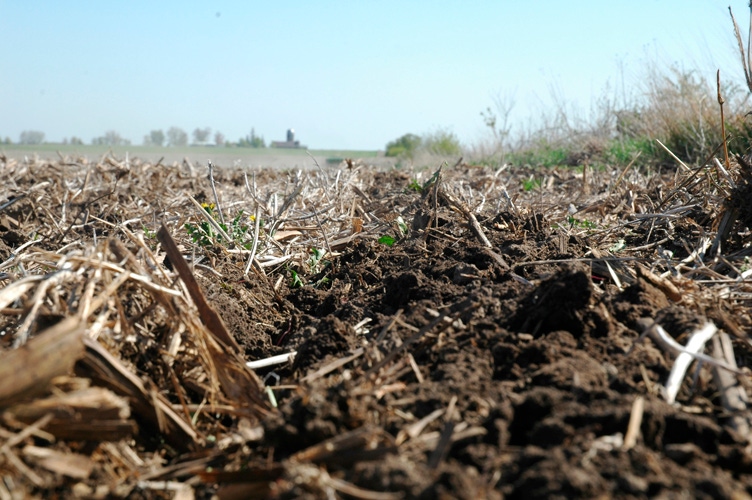November 2, 2011

Farmers should take soil drainage, fertilizer and planting needs and economic thresholds into consideration before making tillage decisions, says Tony Vyn, a Purdue Extension agronomist.
"The first thing to consider when looking at tillage is whether we benefited from the tillage we did last year," Vyn says. "Once again this year, there was very little yield advantage for those who did conventional tillage."
No-till soybeans continue to perform as well as conventional tillage options, he says. No-till has also been found to be consistently successful for corn in rotation with soybeans when comparisons are based on similar planting dates for alternative tillage systems. But for farmers who intend to plant earlier, incorporate lime, or band- apply fertilizers such as phosphorous below the soil surface, strip tilling and vertical tillage are two relatively new options that still protect the soil resource.
"These new, intermediate systems can preserve surface residue while enabling successful establishment of corn," Vyn says. "However, we have not achieved success with no-till operations when corn follows corn on poorly drained soils. As with any tilling system, with farmers paying more than ever for seed, we want to make sure that the final populations are not compromised and the yields are consistent."
Both minimum-till systems enhance soil drying while leaving much of the soil undisturbed. Strip-tilling disturbs only one-third of the area and results in comparable yields to the standard fall chisel system in corn planted after either soybean or corn, Vyn says. Shallow vertical tillage operations involve high-speed coulter and harrow operations that typically penetrate no more than the top 2-3 in. of the soil, cut and redistribute residue and help level the field surface.
Other farmers are considering double-row strip tillage, which involves strip-tilling (for instance, between former corn rows), followed by planting soybean rows between 7 and 8 in. apart near the center of the strip. With this planting system, the soybeans can form an earlier canopy cover.
Farmers should consider planting methods during the fall before tilling any more than necessary, Vyn says.
"Before making any tillage decisions, growers should consider an accurate reflection of total cost," he says. "Conventional tillage usually means three full-width passes in the field – sometimes more. We've noticed very little yield gain, so typically the expenditure isn't worth it."
Minimal or no-till systems can save farmers more than $20/acre in equipment maintenance, fuel and labor. But the complete savings are realized when the farmer considers soil productivity.
"Full tillage and subsequent soil loss can quickly lead to negative implications for your land's long-term productivity," Vyn says.
You May Also Like




